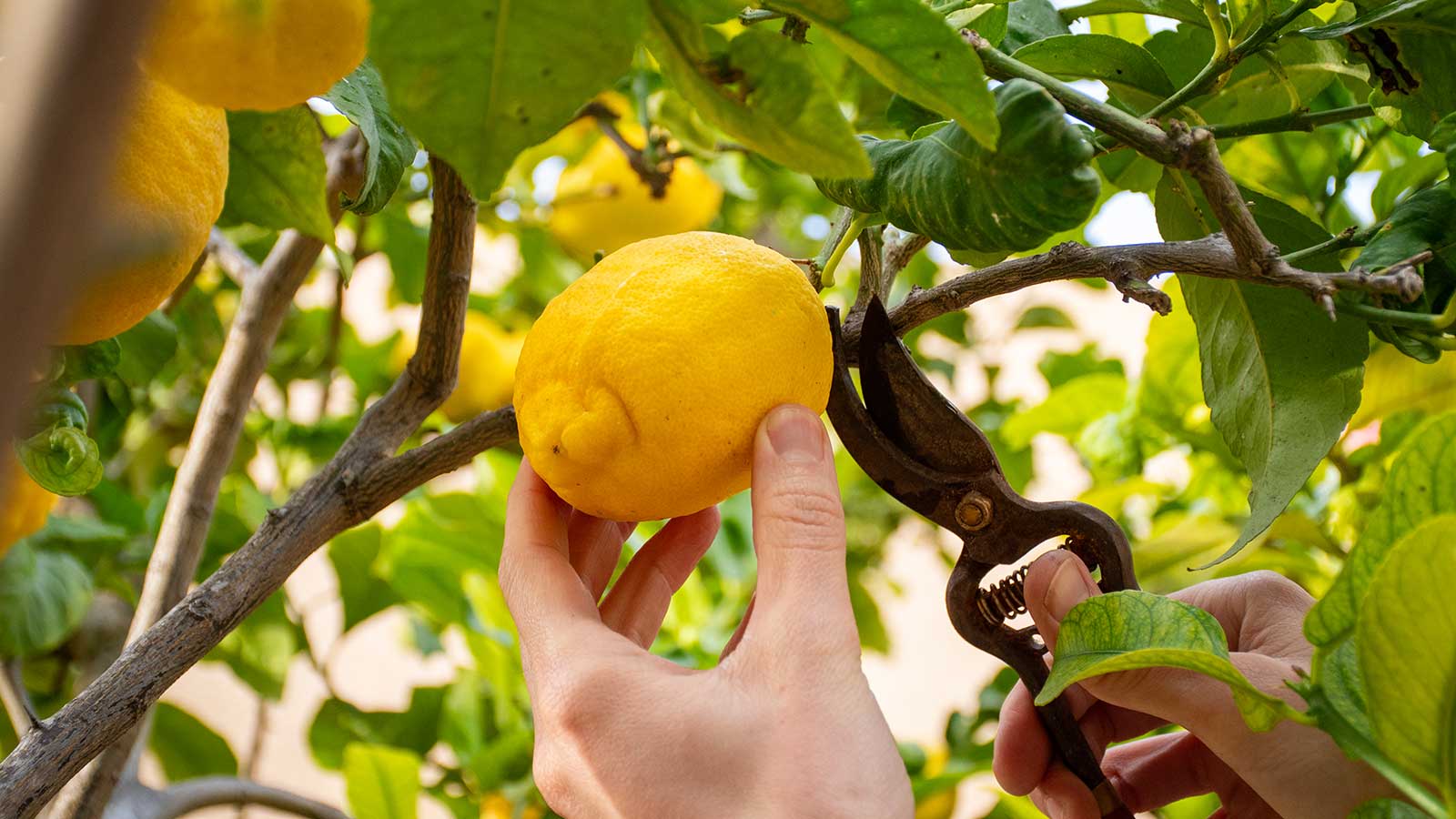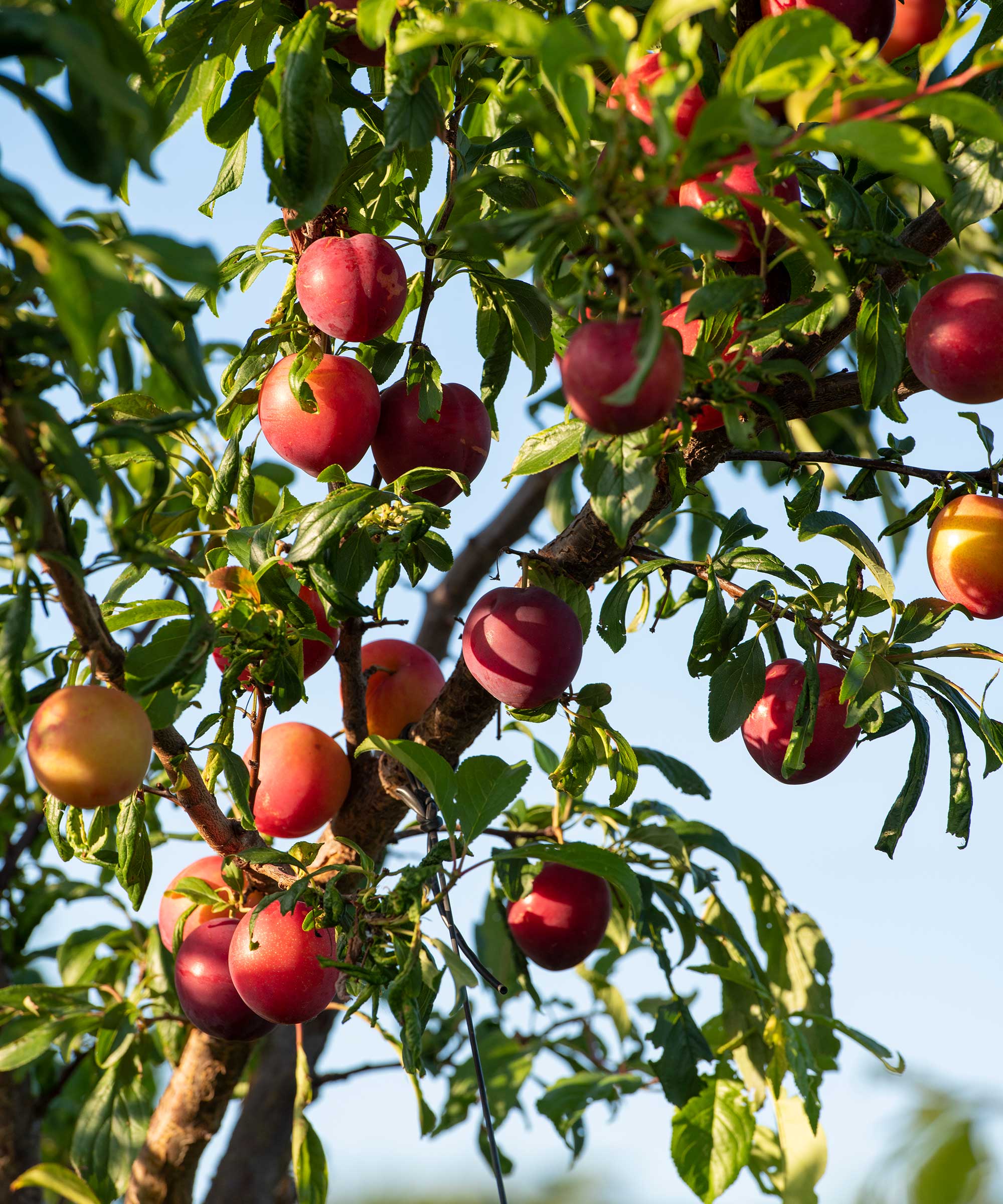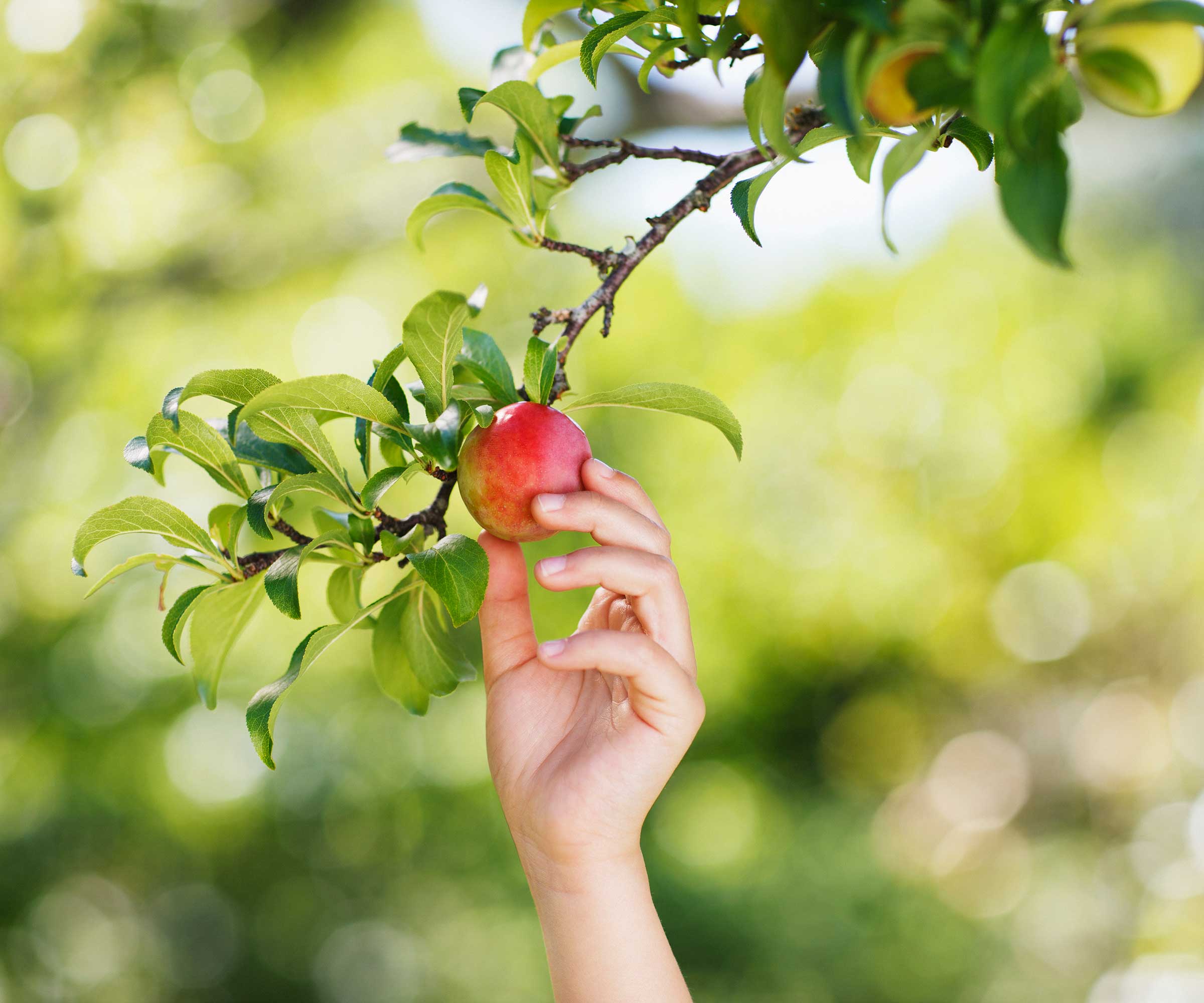
Plucking a perfectly ripened fruit straight from the tree is a simple joy for all ages. And if your neighbor has a particularly thriving specimen that hangs over your fence, you may feel like you’re in luck come harvest time. But before you start picking with gusto, it’s worth getting the lowdown on what’s legal – otherwise, you could end up in a disagreement, or even get landed with a fine.
There are many easy fruit trees to cultivate at home, from apples and pears to figs. But it can take a while – we’re talking years – for young plants to mature enough to produce a bumper crop. While you patiently wait, enjoying the fruit from your neighbor’s tree can seem even more tempting, especially if it’s hanging above your head, or even fallen onto your lawn.
However, the laws on whether this is actually allowed can vary depending on where you live, so if in any doubt, it’s worth looking up exactly what rules apply to you. But, to get an idea of what can be the case, I turned to legal experts, who share their insights below.
Who owns the tree?

Kyle Williams, the founding partner of the Atlanta-based real estate law firm Williams Teusink, says that tree regulations vary widely from state to state and city to city. However, he notes that it’s generally accepted that the ownership of a tree – and of its fruit – is determined based on the location of the tree trunk, and not the tree's underground roots.
‘In our urban environments, it’s common for a tree trunk to be near or even straddle property boundary lines. It’s even more common for tree branches and fruit to cross over property boundary lines and overhang or drop into a neighboring property,’ he says.
‘If a tree trunk is shared between two neighboring properties, that boundary tree is commonly owned by the two properties,’ he continues. ‘While neither can trespass onto the other's property, they both enjoy the benefits of the tree and its fruit that are on their property.’
But what happens if the trunk is firmly on one side of the fence, but its branches reach across into the other? According to Kyle, a neighbor generally has the right to trim overhanging limbs from a neighbor's tree that cross over into their yard. And when it comes to its fruit, ones that overhang, cross into, or even drop into a neighboring yard are similarly subject to a neighbor's use, he says. ‘It isn't like your neighbor is going to rake their tree's leaves that fall into your property.’
Ben Michael, an attorney at Michael & Associates Criminal Defense Attorneys, agrees that you can pick whatever is specifically on your side of the property boundary line. ‘You cannot pick anything that’s on their side of the property, and you cannot go on their property to try to access the fruit on your side, as that would be considered trespassing,’ he notes.
Kyle also says that you can’t reach into your neighbor's property to pick or shake their tree. A neighbor also has to exercise reasonable care and diligence, he highlights, and ‘cannot severely cut or undermine a neighbor's tree that jeopardizes the health of a tree.’ As a side note (perhaps one that goes without saying): never try to sneakily kill a neighbor’s tree without cutting it down.
Felco pruners are the best pruners you can buy. These secateurs are constructed of forged aluminum handles and hardened steel blades, ideal for all your pruning jobs in the backyard – and will be useful for cutting fruit-laden branches, too.
Remember, the rules can vary

However, as mentioned above, it’s important to remember that the rules can vary. ‘Some places are stricter about tree law, especially if the fruit is a high-value crop like citrus or avocados,’ notes Shane Lucado, the CEO of InPerSuit Inc.
He warns that picking a neighbor’s fruit from their overhanging tree can be seen as ‘conversion’ (ie, an unauthorized taking), and the neighbor could file a civil claim for the value of the fruit. ‘In fact, some folks get into $500 small claims fights over backyard figs.’
So, what can you do to stay on the safe side? To start with, Kyle recommends obtaining a property survey that shows the location of all trees, including tree trunk diameter and critical root zones, ‘as property boundary lines do not always follow yards, or even fences.’
As well as this, he suggests approaching the issue with friendly, open communication, to work together with your neighbor to keep the trees healthy and make sure there’s plenty of fruit for everyone to enjoy. Shane also recommends having a conversation: ‘If you want the fruit, knock on the door and ask. It is cheaper than court.’
FAQs
Can you pick fruit from public trees?
It's often fine to pick fruit that's growing from trees on public land, but again, always best to check specific laws in your area. There are online maps available – take a look at the Falling Fruit or Endless Orchard projects if you're interested.
Can you pick fruit from a neighbor’s tree in the UK, if it’s overhanging your property?
According to the Royal Horticultural Society, in the UK, you can not pick and keep the fruit nor collect windfalls from a neighbor's tree that overhangs your property without their permission.
While you wait for your own fruit trees to produce a delicious crop, It's worth reading up on how to fertilize them for the best results. It's a good idea to check how to protect fruit trees from frost, too. And if you haven't planted one yet, why not consider one of the best fruit trees to grow in pots – a perfect addition to a more compact space?







